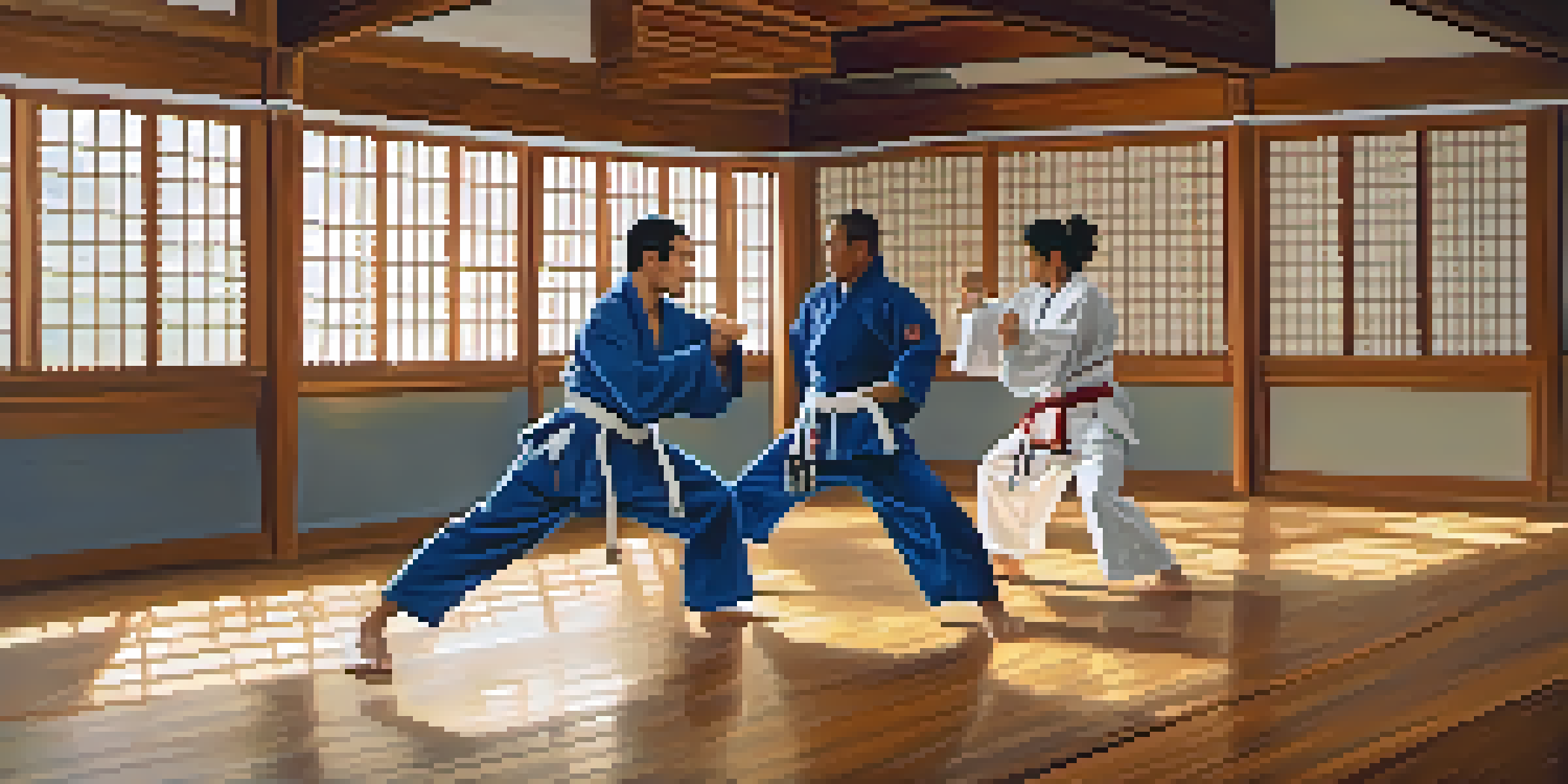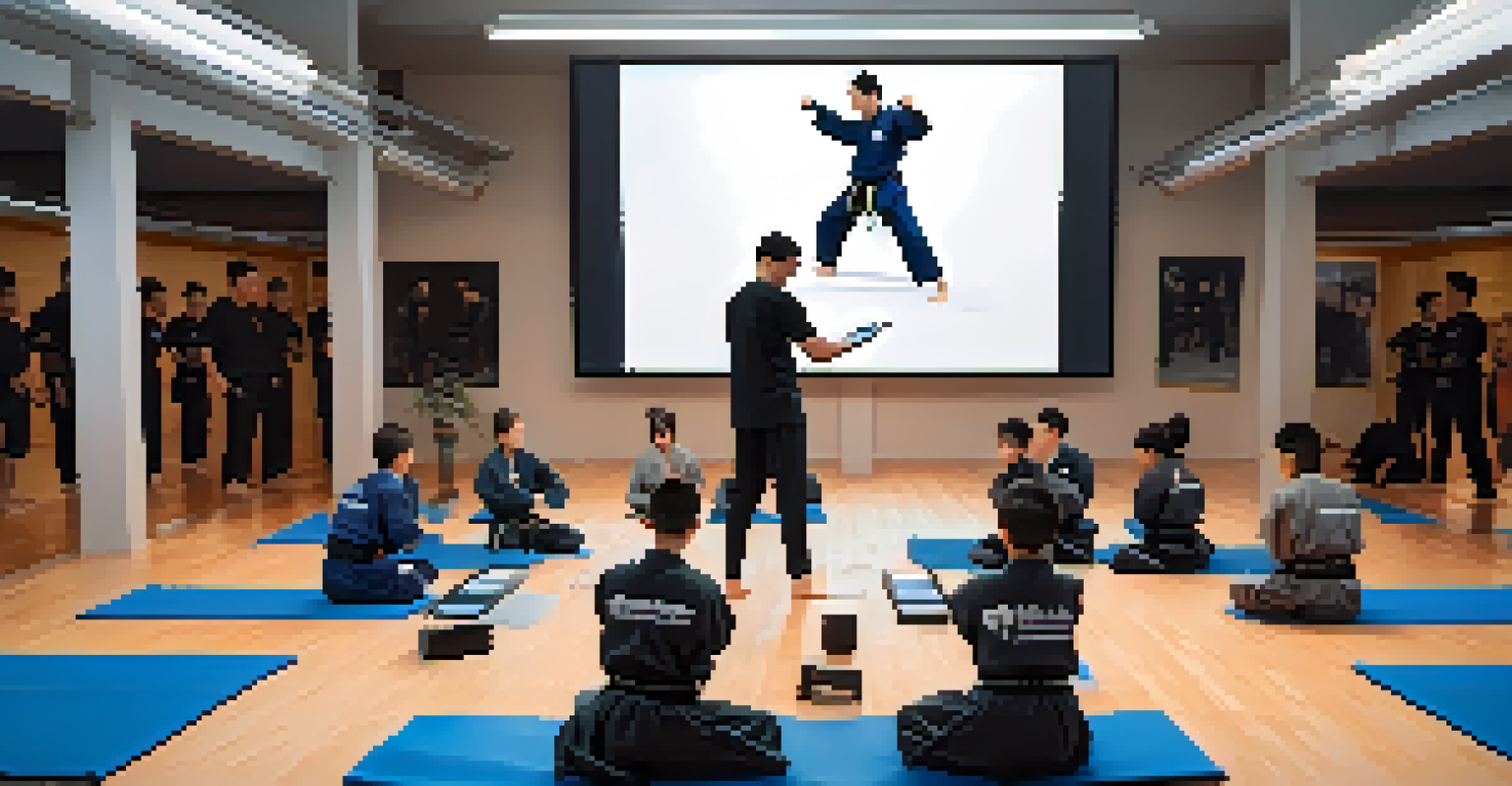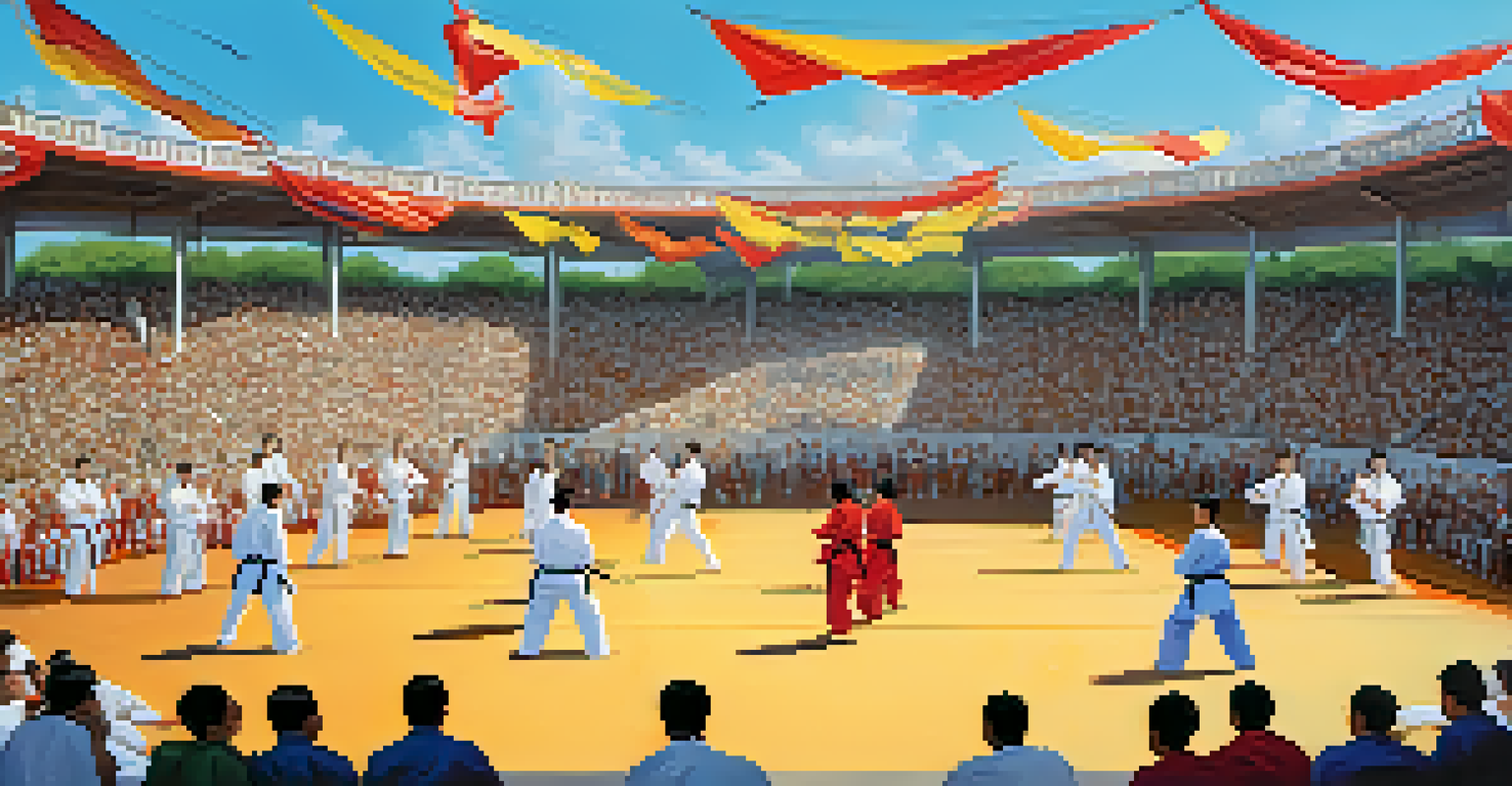Adapting Training Methods for Different Martial Arts Styles

Understanding the Core Principles of Martial Arts Styles
Martial arts encompass a wide range of disciplines, each with its own unique philosophy and techniques. Understanding the core principles of each style is crucial when adapting training methods. For example, while Brazilian Jiu-Jitsu emphasizes ground techniques and leverage, Taekwondo focuses on high, dynamic kicks and quick footwork.
The greatest victory is that which requires no battle.
Recognizing these foundational elements allows trainers to create a more effective and tailored approach to teaching. By respecting the essence of each style, instructors can better engage students and enhance their learning experience. This adaptability can significantly improve both skill acquisition and retention.
Moreover, understanding these principles helps in setting realistic goals for students, ensuring they progress at a pace that suits their chosen discipline. This thoughtful approach can foster a deeper appreciation for the art, making the training more enjoyable and meaningful.
Tailoring Training Approaches for Different Skill Levels
Not every student comes to the dojo with the same level of experience, and adapting training methods to suit various skill levels is vital. Beginners may need more foundational techniques and slower-paced drills, while advanced practitioners can handle complex combinations and sparring. By identifying students' skill levels, instructors can provide personalized guidance that maximizes their potential.

For instance, teaching a basic jab-cross combination to a novice while introducing advanced footwork to an experienced fighter ensures everyone gets the most out of their training sessions. This tailored approach not only boosts confidence in beginners but also challenges advanced students to refine their skills.
Tailor Training for All Skill Levels
Adapting training methods to different skill levels ensures personalized guidance that maximizes each student's potential.
Furthermore, recognizing individual learning styles—whether visual, auditory, or kinesthetic—can enhance the effectiveness of training. By incorporating diverse teaching methods, instructors can ensure that all students stay engaged and motivated.
Incorporating Cross-Training for Broader Skill Development
Cross-training is an excellent way to enhance martial arts skills and can be particularly beneficial when adapting training methods. By incorporating elements from various styles, students gain a more well-rounded skill set. For example, a Karate practitioner might benefit from grappling techniques learned in Judo, while a Muay Thai fighter can improve their striking by studying Western boxing.
Martial arts are not about fighting; they are about building character and discipline.
This blending of disciplines not only enhances physical abilities but also deepens understanding of different martial arts philosophies. It promotes adaptability and creativity, essential skills for any martial artist. Every martial art has something valuable to offer, and cross-training opens up a world of possibilities.
Moreover, it can prevent training plateaus, as students become more versatile and capable. Engaging in different styles can reignite passion and excitement for martial arts, making training feel fresh and dynamic.
Adapting Warm-Up Routines for Specific Martial Arts Needs
Warm-up routines are critical for preparing the body for rigorous training, but they should be tailored to the specific demands of each martial art. In a Brazilian Jiu-Jitsu class, for example, warm-ups might include mobility exercises and drills that mimic ground movements. Conversely, a Taekwondo warm-up could feature dynamic stretches and kicking drills to enhance agility and flexibility.
By customizing warm-ups, instructors can better prepare students physically and mentally for the techniques they'll be practicing. This personalized approach not only prevents injuries but also optimizes performance during training. When students feel ready and engaged from the start, they’re more likely to focus and absorb the material presented.
Incorporate Cross-Training Benefits
Cross-training enhances martial arts skills by blending techniques from various styles, fostering adaptability and creativity.
Additionally, a well-structured warm-up can serve as an opportunity to reinforce the core principles of each martial art. Incorporating specific techniques into the warm-up can help solidify students' understanding and readiness for the training ahead.
Adjusting Sparring Techniques for Different Styles
Sparring is a vital component of martial arts training, but the approach should vary significantly across different styles. For instance, the sparring techniques used in a traditional Karate dojo may emphasize point fighting, while in Muay Thai, the focus will be on clinch work and striking. By adapting sparring methods, instructors can ensure that students effectively practice the relevant skills of their chosen discipline.
Moreover, sparring sessions can be adjusted to focus on specific learning objectives, such as defensive strategies or counter-attacks. This kind of targeted practice allows students to refine their techniques in a controlled environment, preparing them for real-life scenarios. It also encourages critical thinking and adaptability during combat.
Additionally, varying the intensity and rules of sparring can cater to different skill levels, helping to create a safe yet challenging atmosphere. This adaptability is essential for building confidence and ensuring that all students feel comfortable and secure during their training.
Using Technology to Enhance Training for Various Styles
In today's digital age, technology can play a significant role in adapting training methods for different martial arts styles. Tools like video analysis software allow instructors to break down techniques and provide detailed feedback. This can be particularly useful for styles with intricate movements, helping students visualize and correct their form.
Moreover, online resources and apps offer a wealth of information, from instructional videos to training logs, enabling students to enhance their skills outside of class. For example, a student learning Capoeira might use an app to track their progress in mastering specific movements, complementing their in-class training.
Build a Supportive Martial Arts Community
Creating a supportive community enhances the training experience, encouraging motivation and personal growth among practitioners.
Additionally, virtual reality (VR) training is emerging as an exciting way to practice techniques in a controlled environment. This innovative approach can provide students with immersive experiences that enhance their learning and retention, making training feel more engaging and interactive.
Creating a Supportive Community for Diverse Martial Arts Training
A supportive community can significantly enhance the training experience for martial artists of all styles. Creating an environment where students feel encouraged and uplifted allows for more effective learning and personal growth. This sense of community can be fostered through group activities, social events, and collaborative training sessions across different disciplines.
For instance, hosting inter-style tournaments or workshops can promote camaraderie among practitioners of various arts. These events not only provide opportunities to showcase skills but also allow students to learn from one another's experiences and techniques. When students feel connected to their peers, they are more likely to stay motivated and engaged in their training.

Moreover, a strong community can offer vital support during challenging times, such as preparing for competitions or overcoming personal obstacles. By building relationships within the dojo, students can draw strength from one another, enhancing their overall martial arts journey.